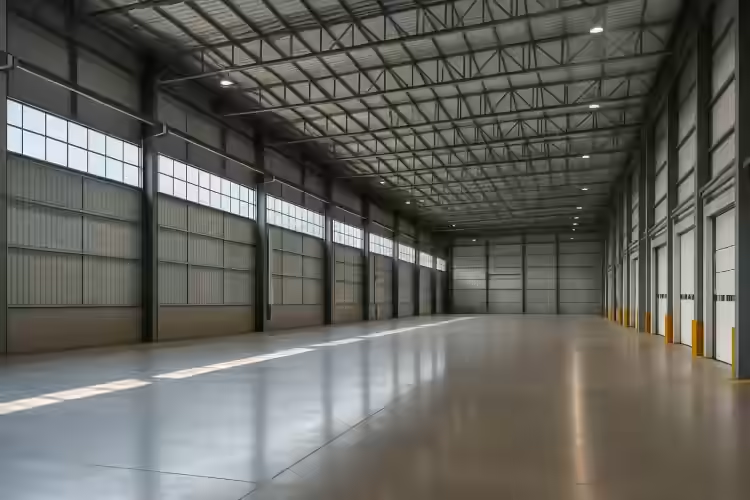What’s the Real Cost of Leasing a Warehouse?
Let’s be honest—warehouse leasing isn’t exactly dinner party conversation. But if you’re starting a logistics-heavy business or scaling operations, it’s *critical* intel.
And here’s the kicker: the price tag isn’t always what it seems.
You’ll see rates advertised like "$0.85/sq ft per month," and think, “Cool, I can handle that.” But once you dig in—utilities, maintenance, insurance, taxes—it starts stacking up fast.
So let’s break it down in plain English. No fluff. Just what you need to know to lease smart.
The Big Pricing Factors You Need to Know
Warehouse pricing isn’t one-size-fits-all. It’s more like a burrito—you choose what you want inside, and that drives the cost.
Here are the main ingredients:
1. Square Footage
Bigger space = bigger cost. But here's the trick: price *per square foot* usually drops the more space you lease. A 10,000 sq ft warehouse might cost $1.20/sq ft/month. Go to 50,000 sq ft? You might get it for $0.90/sq ft/month.
2. Location, Location… You Know the Drill
Markets like Los Angeles, California or Miami, Florida will cost you a premium—sometimes over $1.50/sq ft/month. Meanwhile, you could pay under $0.60/sq ft in areas like Columbus, Ohio or San Antonio, Texas.
3. Warehouse Type
Are you leasing a basic shell? Or a climate-controlled distribution center with 30-ft ceilings and 10 dock-high doors? The bells and whistles add up.
4. Age & Condition
New builds come at a premium—but you’ll save on repairs. Older buildings might look cheaper, but factor in higher maintenance costs.
Average Warehouse Lease Rates by Region
Let’s look at ballpark numbers by region (monthly per square foot):
- Atlanta, Georgia: $0.70–$1.10
- Phoenix, Arizona: $0.85–$1.25
- Seattle, Washington: $1.20–$1.80
- Dallas, Texas: $0.65–$1.00
- Chicago, Illinois: $0.80–$1.30
Hidden Costs That’ll Sneak Up on You
This is where a lot of folks get blindsided.
TIs (Tenant Improvements): Need extra office space, HVAC upgrades, or racking systems? That’s on you—or at least partially.
CAM (Common Area Maintenance): You’ll chip in for parking lot lights, landscaping, and even snow plowing if you’re leasing in Denver, Colorado.
Utilities: Not all landlords cover electricity, water, or even trash removal.
Insurance: Landlord’s got theirs. You need your own liability and contents policy.
Taxes: Triple net leases mean *you* pay property taxes. Factor that in.
It adds up quick. What looked like $10,000/month can balloon into $14,000 if you’re not careful.
Lease Terms: What’s in the Fine Print?
Length matters. So do the little clauses most people skim.
Term Length: Most commercial leases run 3–10 years. The longer the term, the better the rate (usually). But don’t lock in if your business might pivot.
Escalation Clauses: Your rate goes up annually—typically 2–4%. Sometimes tied to inflation. Don’t get caught off guard.
Maintenance Responsibility: Who fixes the leaky roof? Who services the sprinkler system? Spell it out.
Exit Clauses: Can you sublease? Get out early? These are clutch if your biz scales faster than expected—or hits a rough patch.
Budgeting Smart: Tips Before You Sign
Here’s how to keep your financials in check:
- Run the Total Occupancy Cost: Base rent + CAM + taxes + insurance + utilities. Don’t just look at the sticker price.
- Get Multiple Quotes: Don’t fall in love with the first space. Landlords compete—you’ve got leverage.
- Use a Broker: Especially one who knows your industry. They’ll sniff out bad deals and hidden traps.
- Leave Room to Grow: Don’t max out your space on Day 1. 10–20% buffer is smart.
Real-World Leasing Examples
Here are two real scenarios we’ve seen through IndustrialSpaces.net:
Case 1: Regional 3PL in Nashville, Tennessee
They leased a 40,000 sq ft cross-dock facility for $0.95/sq ft/month. Looked great… until they had to install $200K worth of pallet racking and cooling units for sensitive freight. Lesson? Factor in your buildout needs early.
Case 2: E-Commerce Startup in Sacramento, California
They grabbed a 12,000 sq ft flex space for $1.45/sq ft. Not cheap, but close to their last-mile customer base. They negotiated three months of free rent and TI reimbursement. Moral? Leverage matters.
Final Thoughts: Know Before You Go
Warehouse leasing is part math, part strategy, and part gut check.
Don’t go in blind. Get the full picture—beyond just rent. Talk to a broker. Walk the space. Ask stupid questions (they're not actually stupid). Get everything in writing.
Whether you're launching your first operation or expanding to a new market like Charlotte, North Carolina, understanding your true leasing costs can make or break your margins.
Because when you sign that lease? You're not just renting space. You're renting the next chapter of your business.
So lease smart. And if you need help finding the right warehouse, well… you know where to start.

